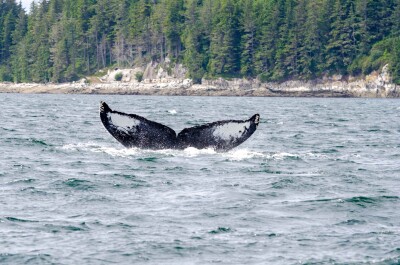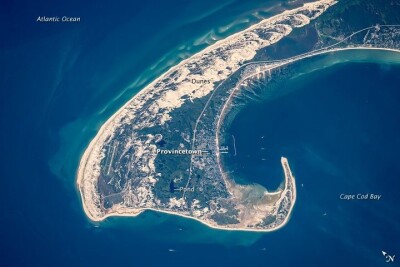Northeast
Lobster boat clocks 64 mph; Uncle's UFO dominates race
"That was 62.7 [mph]. I'll get more out of her. We've got something here," said Richard Weaver, after the 30-foot Foolish Pleasure crossed the finish line in her first race of the day at the Searsport (Maine) Lobster Boat Races on July 12.
Weaver, of Weaver's Engines, in Steuben, Maine, built Foolish Pleasure's engine, starting out with a 632 Merlin block and then adding custom cam, pistons, crank, you name it, all built to his specs.
Back in the first weekend of the racing season, Foolish Pleasure showed it was a boat that for the first time could break the 60-mph mark at a Maine lobster boat race. The only question after that was just how fast could she be?
The first races were held at Boothbay on June 21 and the next day at Rockland. At Boothbay, Galen Alley, Foolish Pleasure's owner and the one who's at the helm come race time, said his GPS put his speed at 61.6 mph, but the race committee's radar picked him up at 53.9 mph.
Needless to say, Alley was less than pleased, so the next day at Rockland, he asked Jon Johansen, who would be operating the radar gun, where he would be at the finish line.
"He said, 'I'm goin' be right over there on that boat. You want a good reading, you come right at me.' And I came right at him," says Alley. Both the radar gun and Alley's GPS recorded 61.6 mph.
Foolish Pleasure is a work in progress. Alley described his boat earlier in the year as "the fastest boat in a circle," because of the boat's tendency to set off on its own, despite where Alley wants it to go.
At the July 5 races held on Moosabec Reach, between Jonesport and Beals Island, Foolish Pleasure took off on Alley and headed across the reach instead of down it.
"The problem was," Alley remembers, "they started us off at such a slow speed that when I hammered her all at once, she launches right out. And when she comes down, it's whichever way she's pointing is the way she's going to go."
Alley had lined up Foolish Pleasure on the Jonesport side of the reach (locals say it's because he knows there's less tide there) and when she came down, the boat was headed to Beals Island, and that's 90 degrees in the wrong direction.
It also put Foolish Pleasure headed at Wesley Shute's boat Daydreamer.
"She was pulling to the left, pulling to the left. She was going right at him," Alley says. "So I slowed her down and got her straightened out and gave it to her again."
Shute, as it turns out, also had to throttle back because Daydreamer suddenly had engine problems, reportedly burning up four pistons.
Once Alley got his boat headed down the race course, he showed everyone along the sides of the reach and on the bridge at the end of the course just how fast Foolish Pleasure is, hitting 64 mph. (Alley said local fisherman and racer Benny Beal, clocked him at 65 mph on his radar gun, but it was the reading on the race committee's radar gun that counted.)
Weaver is going to have to wait for another race to find out what speed Foolish Pleasure is capable of. At the end of her next race at Searsport, Foolish Pleasure was in the lead by several boat lengths when the shrill scream of the Merlin suddenly went silent and the boat settled into the water.
Foolish Pleasure was only a couple of boat lengths from the finish line when the engine shut down (it was later determined to be clutch related) and could have drifted across the line and won, but the tide was against her, and she never crossed the line on her own power. Still, she was clocked at 62.7 mph when the engine stopped.
Foolish Pleasure's problems left the door open for Andy Gove's Uncle's UFO, a Northern Bay 36 hull. She took her class, the diesel free-for-all and the fastest lobster boat race, hitting 44.6 mph.
However, the best matchup of the day was between Andy Johnson's Whistlin' Dixie, a Holland 40 with a 1,000-hp Caterpillar C18, and Chris Young's Miss Madelyn, a Duffy 42. All the way down the course, the boats were less than a boat length apart, with Whistlin' Dixie edging out a win at 40.6 mph. — Michael Crowley
West
'Bulbs' get new rule, save fuel; Bristol Bay gillnetter is rebuilt
A lot of West Coast fishermen have selected Platypus Marine in Port Angeles, Wash., to outfit their fiberglass fishing boats with bulbous bows.
Pillar Bay, a 58-foot Delta Marine–built seiner, is the most recent boat out of Platypus Marine. It left in early June.
The boatyard's Charlie Crane says that owners of boats retrofitted with bulbous bows report 10 to 17 percent better fuel efficiency. That figure could improve as a result of a recent change in regulations for Alaska limit seiners.
Limit seiners have been restricted to 58 feet in overall length, but Platypus Marine's Bruce Bryant says a new rule allows underwater appendages to push the boat's length past 58 feet as long as the boat's capacity to carry fish is not affected.
"Now that we don't have to adhere to [the old] rule, we can create more efficient bulbs because we are able to go a little longer. Now we don't have to worry about hanging a plumb bob and making sure the bulb isn't too long," Bryant says.
Besides the bulbous bow, Pillar Bay had fuel tanks repaired and a porthole added to the captain's stateroom. The yard also gelcoated the fish hold, and gave the after deck a coating of polyurea, which is similar to Rhino lining that is applied to the bed of a pickup truck, says Bryant.
Another 58-foot seiner in for a retrofitted bulbous bow was the Defiant. She also had her deck stripped down and coated with polyurea.
Bulbous bows installed at Platypus Marine are designed to have neutral buoyancy. Partially filling the bulb with foam and then putting a hole in the top and bottom and allowing the bulb to fill with water achieves the neutral buoyancy.
"Some guys want to use it for ballast, but we don't do that. It changes the stability," Bryant says.
Another boat in for work was the Kettenberg Marine–built 50-foot albacore troller Pacific Pride. She got 26' x 21" rolling chocks and fiberglass repairs to the cap rail and fuel tanks.
Pacific Pride also had a sonar tube built in the hull for a new sonar.
This spring, Maritime Fabrications in La Conner, Wash., launched the 32-foot Gentle Ben after rebuilding much of the boat. The Bristol Bay gillnetter was built in 1978 at American Commercial Marine.
This was the first major work on the aluminum boat in 30 years, says Will Simon of Maritime Fabrications.
When the Gentle Ben was built, American Commercial Marine, or ACM as it was often referred to, was building 10 to 15 Bristol Bay gillnetters a year, first aluminum and then fiberglass.
Simon, who worked for ACM, recounted a story from that time. It has to do with Marco's entry into building Bristol Bay gillnetters.
"When Marco decided there was a market for Bristol Bay boats, they sent a crew of engineers to American Commercial Marine pretending to be fishermen shopping for a boat. They went through the boats that were on the floor with a fine-tooth comb. But the way they asked questions gave them away. They were not questions a fisherman would ask," Simon says.
He adds that the Marco crew wasn't booted off the production floor but "treated very kindly."
The Gentle Ben's owner, Eric Beamer, had Maritime Fabrications tear out the back of the boat to built new fuel tanks, install an RSW system from Integrated Marine and replace the old cockpit-style deck with a flush deck.
The original Crusader gasoline engine, built on a 454 Chevy block, was replaced with a 330-hp John Deere 6081 diesel.
The existing keel coolers were left in place, but new engine mounts were built, as well as a 5-inch exhaust system with a stainless steel muffler.
The original clutch-pump-based hydraulic system was pulled out and replaced with two load-sensing pumps, one for the deck gear and one for the refrigeration. The pumps run off the port sid
e of the engine and the after end of the transmission.
Rebuilding a boat instead of constructing a new gillnetter saves the boat owner $100,000 to $150,000, says Simon.
The Gentle Ben was one of two Bristol Bay gillnetters that went through major rebuilding this winter at Maritime Fabrications. Jeff Shostad of La Conner owns the second boat. — Michael Crowley
South
Oyster skiff gets a new stern; scallop boats keep yard busy
Shores and Ruark Seafood Co. of Urbanna, Va., has a couple of its boats in for repairs. The first is a 23' x 5' wooden deadrise crabbing skiff built in the late 1980s by Chesapeake Bay boatbuilder Edward Diggs of Mathews County, Va.
Ed Payne of Urbanna operated the skiff for several years in the hard-crab pot fishery before he sold her to Shores and Ruark for the Rappahannock River's peeler crab and oyster fisheries.
In June she was on a trailer waiting for boatbuilder Alvin Sibley of Saluda, Va., to replace her red-oak stern, which had rot at the chine. He would also replace a few bottom planks.
Shores and Ruark Seafood uses the skiff to dredge for oysters on private oyster grounds in the winter and to harvest peeler crabs in the spring.
The seafood company is one of the largest oyster producers on the Rappahannock River and has several styles of workboats. The company grows most of its oysters in cages, and the boat that's used to pull cages full of oysters to the surface is the Honey, a wooden deadrise 42-footer.
Honey recently had mechanical problems. When Shores and Ruark Seafood looked for a marine railway to haul her, they experienced what many watermen in the area are finding to be true: It's hard locating a railway close by to haul a boat. The company's Rufus Ruark Sr. finally got permission to haul the Honey at the old Burrell's Marine Railway just up the creek from his company.
Just a few years ago, Burrell's Marine Railway was a friendly place for watermen. But a developer in Richmond, Va., purchased the property, and the railway portion has been shut down for all public use. It is used to display houseboats.
"We were able to get permission to use the railway, but it's becoming more and more of a problem to haul our boats," Ruark says. "We had a mechanical problem with the wheel that required a short haul. The propeller had spun a bushing out, and we had to replace it with a new one."
Smith Marine Railway in Dare, Va., is a working railway still in business. Right now the 90-foot scalloper Carolina Queen is on the rails.
K.T. Smith, the owner of Smith Marine Railway says the boatyard will replace three deck beams on the Carolina Queen with salt-treated pine timbers, paint the bottom and sides, and install new zincs.
"Wooden boats in the scallop fishery have kept us busy," Smith says. "There are not too many boatyards left that specialize in working on large wooden commercial fishing boats. We have a large scallop fleet in Seaford and that's been our bread and butter."
On another note, Smith says his railway has taken ownership of the oyster buy boat Mobjack, and he has her up for sale. The 72' x 24' boat was brought there for maintenance and after the owner refused to pay the bill, the boatyard took possession of the boat.
Of the remaining Chesapeake Bay buy boats, the Mobjack, built in 1946, is the largest and a little unusual for this style of boats. Most were built by boatbuilders from "rack of eye," that is, without plans. But the Mobjack was designed by naval architect Carl T. Forsberg of Freeport, N.Y., along with her sistership the Ocean View.
The boats' owner, Rufus Miles of Norfolk, Va., was one of the biggest oyster producers in the region and needed a boat that could carry a large payload, yet work in relatively shallow water.
Linwood and Milford Price, a father and son boatbuilding team in Deltaville, Va., built the boats. Prior to this, the Prices had constructed the largest deadrise and cross-planked buy boat ever built. That was in 1927 when they built the Marydel, a 97' x 28' buy boat for W.E. Valliant & Co. of Delaware.
Miles knew the Prices' reputation for building big boats, and he combined their talents with Forsberg's to build the last large Chesapeake Bay buy boats.
Mobjack ended her commercial career several years ago in Virginia's oyster-seed planting program.
She was the only boat with a wide enough deck for a Bobcat front-end loader to help move bags of seed oysters around. — Larry Chowning






